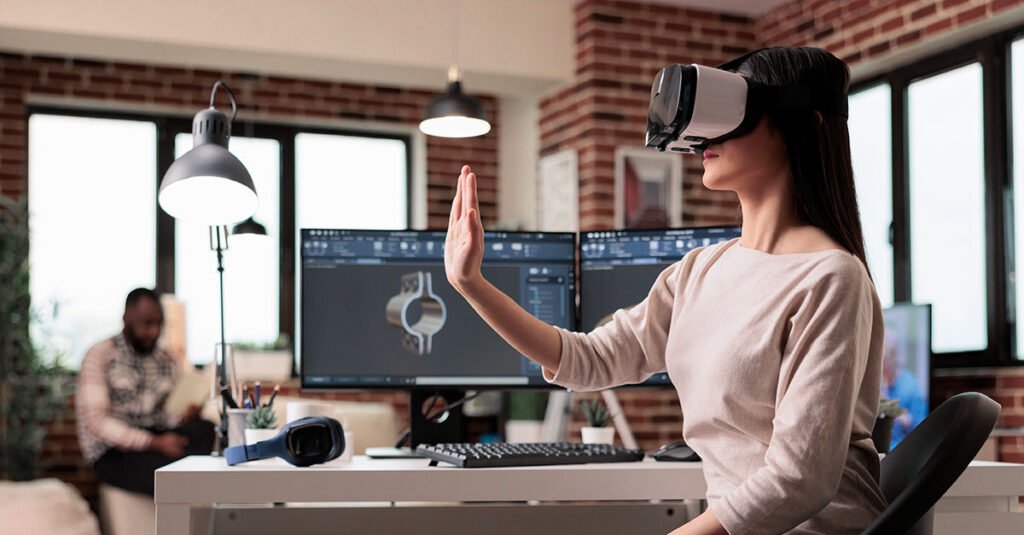By Trustpickr Editorial Team | Updated May 2025
🚀 How AR & VR Are Transforming Higher Education
Immersive technology is no longer sci-fi. In 2025, Augmented Reality (AR) and Virtual Reality (VR) have moved from novelty demos to core instructional tools on campus. By overlaying digital assets onto the real world or transporting students into fully simulated environments, leading universities are:
- Enhancing hands-on learning in medicine, engineering, and the arts
- Enabling remote lab work and field trips without travel
- Boosting engagement and retention through interactive experiences
Here are five trailblazers redefining what it means to learn—and teach—in the digital age.
🏫 1. Stanford University – VR Surgical Simulations
- Program Highlight: School of Medicine’s VR Surgical Suite
- Use Case: Students perform virtual laparoscopic procedures with haptic feedback, practicing 100+ real-world scenarios before ever touching a patient.
- Outcome: Surgical residents at Stanford report a 30% reduction in initial OR errors after VR training.
- 🔗 Explore Stanford Med VR Courses
🏫 2. Massachusetts Institute of Technology (MIT) – AR Engineering Labs
- Program Highlight: AR-enhanced Mechanical Engineering Workshops
- Use Case: Through AR headsets, students overlay digital schematics onto physical prototypes—visualizing stress points, fluid dynamics, and circuitry in real time.
- Outcome: Project completion times have dropped by 25%, and interdisciplinary collaboration has soared.
- 🔗 Join MIT AR Labs Programs
🏫 3. University of Oxford – Virtual Heritage & Archaeology
- Program Highlight: VR Reconstructions of Ancient Sites
- Use Case: History and archaeology majors walk through meticulously recreated Roman villas and Egyptian tombs—measuring artifacts and making annotations that feed into a shared research database.
- Outcome: Student research output increased 40%, and landmark grants have funded expanded digitization efforts.
- 🔗 Enroll in Oxford VR Heritage Courses
🏫 4. University of Southern California (USC) – Immersive Journalism
- Program Highlight: Annenberg School’s VR Newsroom
- Use Case: Journalism students produce 360° VR documentaries, placing viewers at the scene of stories—from wildfire fronts to international summits—learning immersive storytelling techniques.
- Outcome: USC graduates have gone on to win multiple Emmy and Peabody awards for immersive reporting.
- 🔗 Discover USC VR Journalism
🏫 5. Imperial College London – AR in Chemical Engineering
- Program Highlight: AR-guided Chemical Process Simulations
- Use Case: Students wear AR glasses to view molecular interactions in real time, adjust process parameters on virtual control panels, and safely pilot simulated chemical plants.
- Outcome: Lab safety incidents have dropped by 50%, and student comprehension scores have jumped 35%.
- 🔗 Apply for Imperial AR Engineering
📈 Why This Matters for Prospective Students
- Future-Ready Skills: Hands-on AR/VR experience is in high demand across healthcare, engineering, media, and beyond.
- Reduced Costs & Risks: Virtual labs and simulations cut travel expenses and eliminate hazards in high-risk training.
- Enhanced Accessibility: Remote learners gain the same immersive experiences as on-campus students.
- Industry Partnerships: Many programs include co-ops or capstone projects with leading tech firms (Meta, Microsoft, Unity).
💡 How to Choose the Right AR/VR University Program
| Criterion | What to Look For |
|---|---|
| Hardware Access | Do they loan headsets and controllers? |
| Curriculum Depth | Are courses developed with industry partners? |
| Research Opportunities | Are there funded labs or centers you can join? |
| Cost & Financial Aid | Check for tech-grants, device stipends, or research fellowships |
| Alumni Outcomes | Have graduates landed jobs in AR, VR, or related fields? |
👉 Compare AR/VR University Programs Now
🎯 Final Takeaway
The AR/VR classroom revolution is here—and it’s redefining both on-campus and remote learning. By choosing a university with cutting-edge immersive programs, you’ll gain hands-on experience, industry connections, and future-proof skills that set you apart in the workforce.


